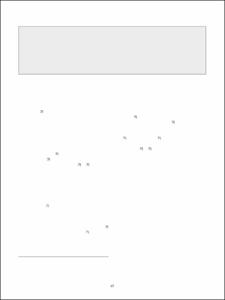확산 경사자장의 방향수에 따른 분할 비등방성 뇌자기공명영상의 잡음에 대한 히스토그램 분석
- Keimyung Author(s)
- Sohn, Chul Ho; Woo, Seong Ku
- Department
- Dept. of Radiology (영상의학)
- Journal Title
- 대한영상의학회지
- Issued Date
- 2005
- Volume
- 52
- Issue
- 2
- Abstract
- Purpose: We wished to analyze, qualitatively and quantitatively, the noise performance of fractional anisotropy brain images along with the different diffusion gradient numbers by using the histogram method.
Materials and Methods: Diffusion tensor images were acquired using a 3.0 T MR scanner from ten normal volunteers who had no neurological symptoms. The single-shot spin-echo EPI with a Stejskal-Tanner type diffusion gradient scheme was employed for the diffusion tensor measurement. With a b-valuee of 1000 s/mm2, the diffusion tensor images were obtained for 6, 11, 23, 35 and 47 diffusion gradient directions. FA images were generated for each DTI scheme. The histograms were then obtained at selected ROIs for the anatomical structures on the FA image. At the same ROI location, the mean FA value and the standard deviation of the mean FA value were calculated.
Results: The quality of the FA image was improved as the number of diffusion gradient directions increased by showing better contrast between the WM and GM. The histogram showed that the variance of FA values was reduced as the number of diffusion gradient directions increased. This histogram analysis was in good agreement with the result obtained using quantitative analysis.
Conclusion: The image quality of the FA map was significantly improved as the number of diffusion gradient directions increased. The histogram analysis well demonstrated that the improvement in the FA images resulted from the reduction in the variance of the FA values included in the ROI.
목적: 확산 경사자계의 방향수에 따른 분할 비등방성 뇌자기공명영상의 잡음 정도를 히스토그램을 통해 정성, 정량적으로 분석하여 적절한 확산텐서영상의 방향수를 알고자 하였다.
대상과 방법: 신경학적 증상이 없는 10명의 정상 성인을 대상으로 3.0 T 자기공명 영상기기를 사용하여 뇌확산텐서영상을 획득하였다. 사용한 펄스열은 Stejskal-Tanner 형태의 확산 강조 경사자장이 포함된 스핀 에코 EPI 기법을 사용하였다. b-value는 1000 s/mm2으로 고정하고 가해지는 확산 경사자장의 방향수를 6개, 11개, 23개, 35개 그리고 47개로 변화시키면서 확산 텐서 영상을 획득하였다. 확산 경사자장의 방향수를 늘려가면서 획득된 확산 강조 영상들로부터 각 방향수별 분할 비등방성(FA)영상을 만들었다. FA영상에서 육안적 정성 평가 후 주요 뇌 구조물에 관심영역을 설정하여 해당 영역의 히스토그램을 구하였다. 동일 관심영역에서 각 방향수별 FA값을 측정하였으며 FA값의 표준편차를 계산하였다.
결과: 분할 비등방성영상에서 확산 경사자장의 방향수가 6개에서 47개로 증가함에 따라 뇌구조물의 백질과 회백질의 경계의 구분이 더 명확하며 영상의 질이 개선되어졌음을 확인할 수 있었다. 관심영역에서 측정한 히스토그램에서 경사자장의 방향수가 증가함에 따라 FA 지수의 분산 정도가 줄어들고 단일 비등방성 지수를 나타냄을 확인할 수 있었고 이는 FA값의 표준편차가 방향수에 따라 줄어든다는 정량적인 분석 결과와 일치함을 알 수 있었다.
결론: 경사자장의 방향수가 증가할수록 더 나은 화질의 FA영상을 얻을 수 있었으며 이를 히스토그램 분석을 이용하여 확인 할 수 있었다.
- Alternative Title
- Histogram Analysis of Noise Performance on Fractional Anisotropy Brain MR Image with Different Diffusion Gradient Numbers
- Publisher
- School of Medicine
- Citation
- 장용민 et al. (2005). 확산 경사자장의 방향수에 따른 분할 비등방성 뇌자기공명영상의 잡음에 대한 히스토그램 분석. 대한영상의학회지, 52(2), 87–92.
- Type
- Article
- ISSN
- 1738-2637
- Appears in Collections:
- 1. School of Medicine (의과대학) > Dept. of Radiology (영상의학)
- 파일 목록
-
-
Download
 oak-bbb-02900.pdf
기타 데이터 / 1.3 MB / Adobe PDF
oak-bbb-02900.pdf
기타 데이터 / 1.3 MB / Adobe PDF
-
Items in Repository are protected by copyright, with all rights reserved, unless otherwise indicated.